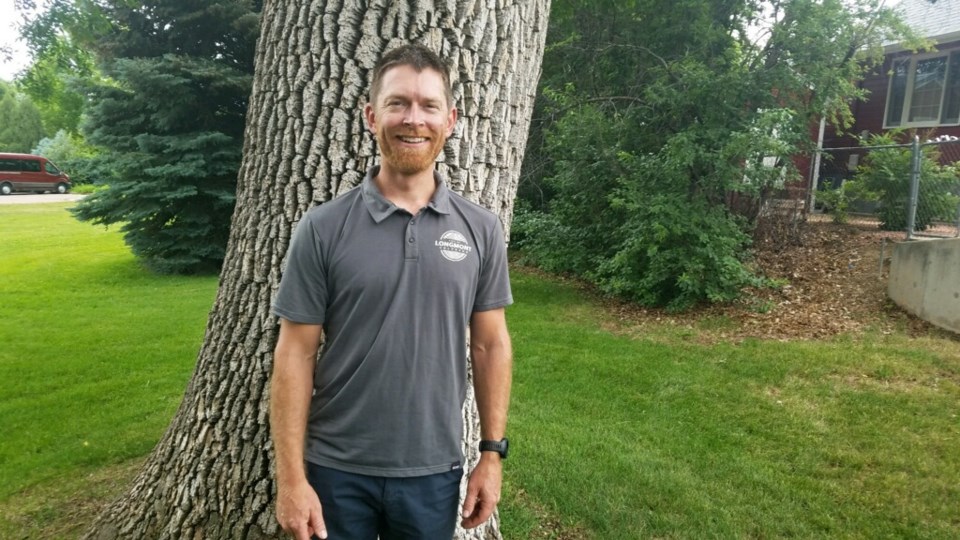City Forester Brett Stadsvold helps preserve the deep roots first planted 150 years ago to keep Longmont shaded and comforted by trees.
“All those folks who started the Chicago Colony, came from an area where there was an abundance of trees,” Stadsvold said. “When they came here, they wanted that same type of environment. That’s why they valued trees so much.”
Residents of Chicago Colony, which eventually became Longmont, hustled water in buckets from St.Vrain Creek to water young cottonwoods and elms planted in the middle of the plains to shelter families. Trees remain a high priority for today’s Longmonters, who proudly boast that this year marks the 40th anniversary of the city’s designation as a Tree City USA, Stadsvold said.
“Here things are pretty dry so trees are held in much higher value,” said Stadsvold, a native of tree-filled Minnesota. “Once people have a tree, they want to hold onto them.”
Longmont recently marked the city’s 150th anniversary and its long-running Tree City USA status by planting a bur oak at Collyer Park earlier this month. The bur oak is considered durable enough to last 150 years.
“My hope is that on the 300th anniversary of Longmont, the tree will still be here as will our ancestors,” said Dale Rademacher, Longmont’s deputy city manager, at the tree planting.
Longmonters covet its urban forests because they clean the air residents breathe, shade homes and help reduce energy costs, according to the city’s forestry web page. “Trees also define Longmont as home,” Stadsvold said.
Stadsvold oversees a staff that maintains and nurtures 100 tree varieties and over 21,000 publicly owned trees. Workers in the forestry program carefully track tree health year-round and plant 200-to-300 trees every year.
Longmont’s tree planting program is highlighted during the Spirit of Arbor Day tree sale held every spring. Residents are encouraged to buy trees at a reduced cost at the tree sale, sometimes getting a $200-to-$300 tree for only $50, Stadsvold said. The COVID-19 pandemic prompted the city to deliver trees to residents who bought them.
The system worked so well, Longmont delivered trees again this year, he said. “It seemed the best way to ensure equity and make sure people who wanted to plant trees got them,” he said.
Colorado’s arid environment takes a toll on local trees, say tree experts. Still, the biggest threat to trees remains the emerald ash-borer, or EAB, a wood-boring beetle that attacks all ash species, Stadsvold said.
The insect was first discovered in Michigan in 2002, and since then it has spread to 31 states, including Colorado. “The Front Range is really the furthest point in the west the as borer has come,” said Stadsvold, who first encountered the insect in 2009 when he worked as an intern for the St. Paul Urban Forestry Department.
The EAB has killed tens of millions of ash trees in the United States. Once the EAB population builds in number, ash mortality is near 100%, according to Longmont’s forestry webpage. “It can kill a tree in two-to-three years after it takes hold,” Stadsvold said.
The insect was first discovered in Colorado in the city of Boulder in 2013 and in Longmont soon after, Stadsvold said.
Longmont removed about 200 trees last year because of the EAB and is currently treating about 1,000 publicly owned ash trees through a contractor, he said. The city also contacts residents to warn them about EAB damage to their ash trees.
“This is a serious threat to many of Longmont’s trees and this is something we work hard to deal with,” Stadsvold said. “We want to protect our tree canopy.”



